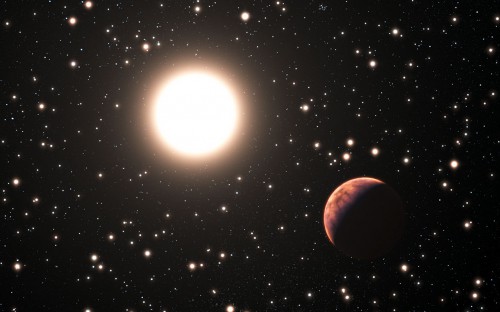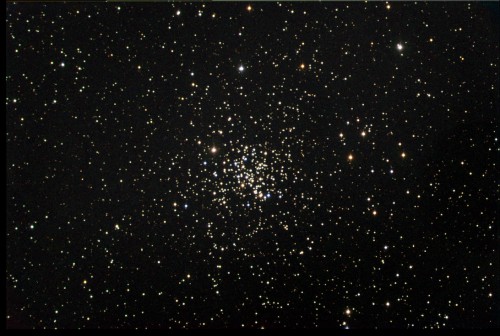
Three more exoplanets have just been found, adding to a long and rapidly growing list, but their location makes them a bit more unique – they orbit three different stars in a star cluster rather than other isolated stars in the galaxy, and one of those stars is a “solar twin” which is almost exactly identical to our own Sun. The results were announced on January 15, 2014 by the European Southern Observatory (ESO).
The discovery was made using the HARPS planet-finding instrument on ESO’s 3.6-metre telescope at the La Silla Observatory in Chile. The planets are located in the star cluster Messier 67, which is about 2,500 light-years away in the constellation Cancer and contains about 500 known stars.
Although thousands of exoplanets have now been found so far, only a small number of those are orbiting stars in a star cluster. Astronomers had thought that perhaps planets would be less common around stars in more densely packed star clusters, but the new results suggest that planets are probably common around stars in clusters as well, but are more difficult to detect.
According to Luca Pasquini of ESO in Garching, Germany, “These new results show that planets in open star clusters are about as common as they are around isolated stars – but they are not easy to detect. The new results are in contrast to earlier work that failed to find cluster planets, but agrees with some other more recent observations. We are continuing to observe this cluster to find how stars with and without planets differ in mass and chemical makeup.”

Two of the stars, and the one in particular, are similar to our own Sun, while the third is a red giant star. All three of the planets are much larger than Earth, with two of them having a mass about one-third that of Jupiter and the third with a mass larger than Jupiter. The first two orbit their stars in seven and five days respectively, while the third orbits in 122 days. None of them are in the habitable zone of their stars, orbiting close to their stars and therefore much hotter than Earth.
The findings indicate that many more planets may be waiting to be discovered in star clusters as well. As Anna Brucalassi of the Max Planck Institute for Extraterrestrial Physics in Garching, Germany adds, “In the Messier 67 star cluster the stars are all about the same age and composition as the Sun. This makes it a perfect laboratory to study how many planets form in such a crowded environment, and whether they form mostly around more massive or less massive stars.”
Confirming this would be an exciting discovery, since most stars are born in similar clusters. The more they look, the more astronomers are finding planets around all different types of stars, and even free-floating planets with no star at all. To find out that they are probably also abundant in star clusters as well, may have been surprising a few years ago, but now, not so much it seems.
This article was first published on The Meridiani Journal.
Want to keep up-to-date with all things space? Be sure to “Like” AmericaSpace on Facebook and follow us on Twitter:@AmericaSpace




Yes, “many more planets may be waiting to be discovered….” The almost daily discoveries continue in exponential fashion giving scientists untold opportunities to expand our knowledge and understanding of planetary formation and by extension, the existence of life forms.